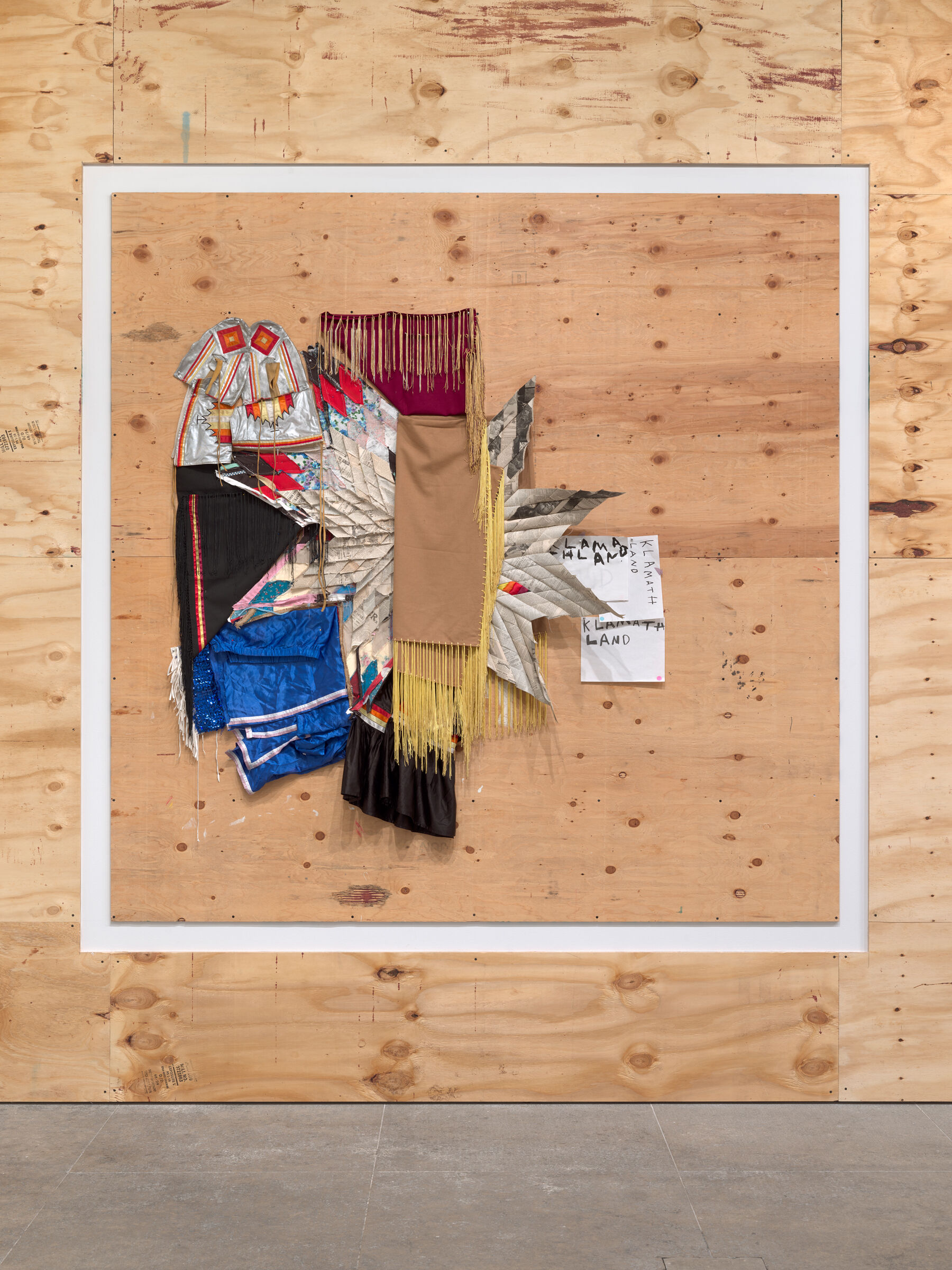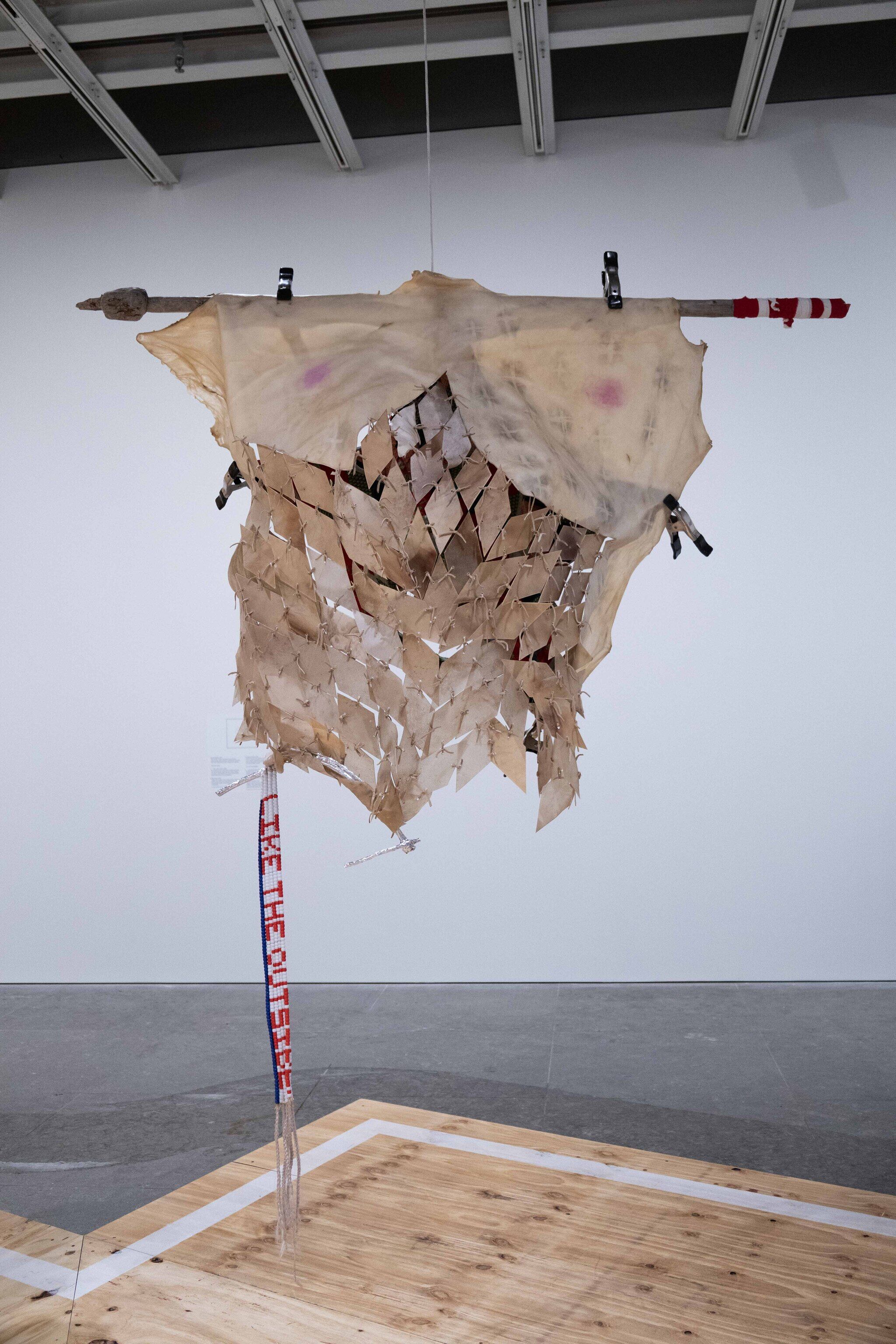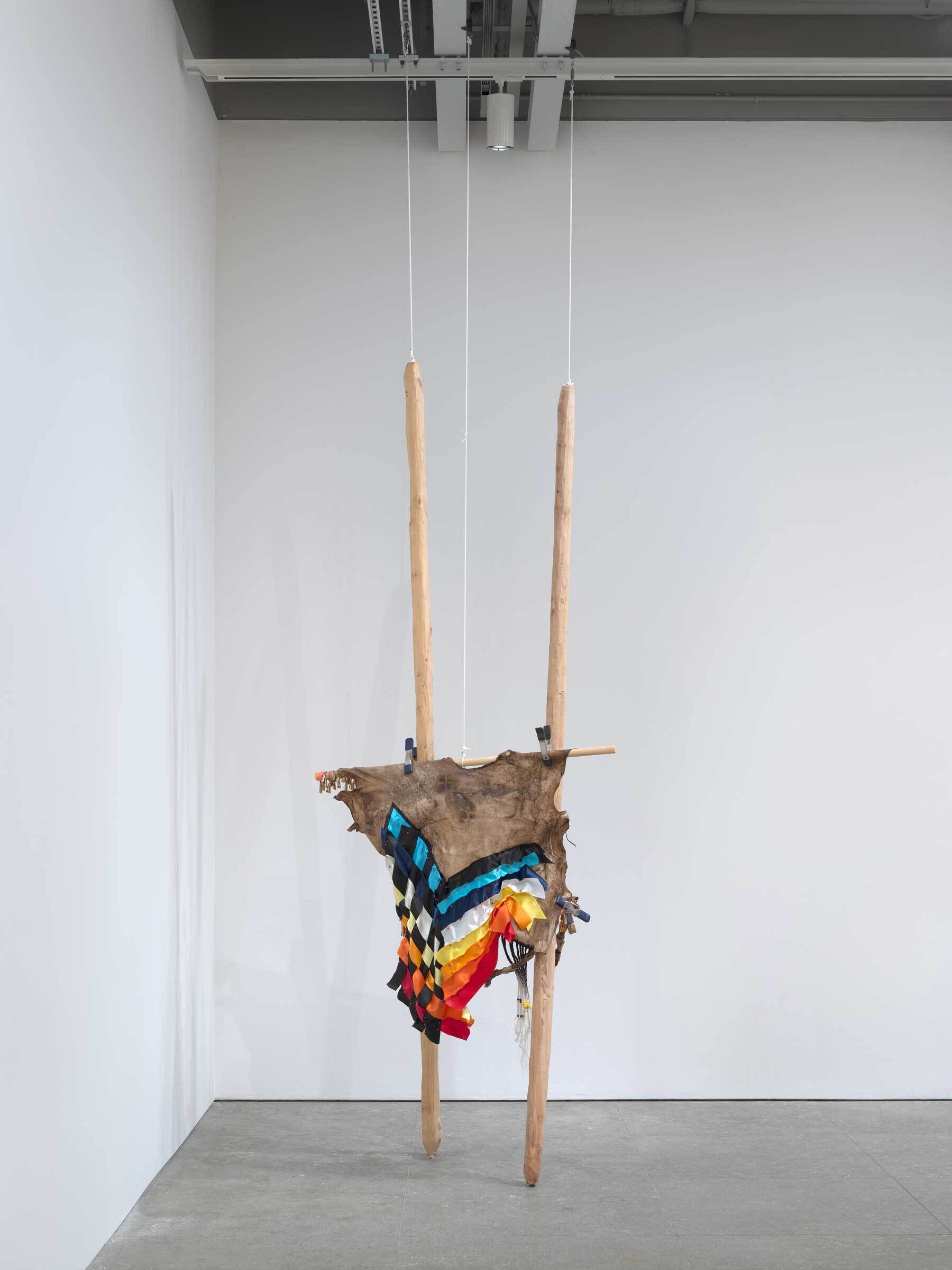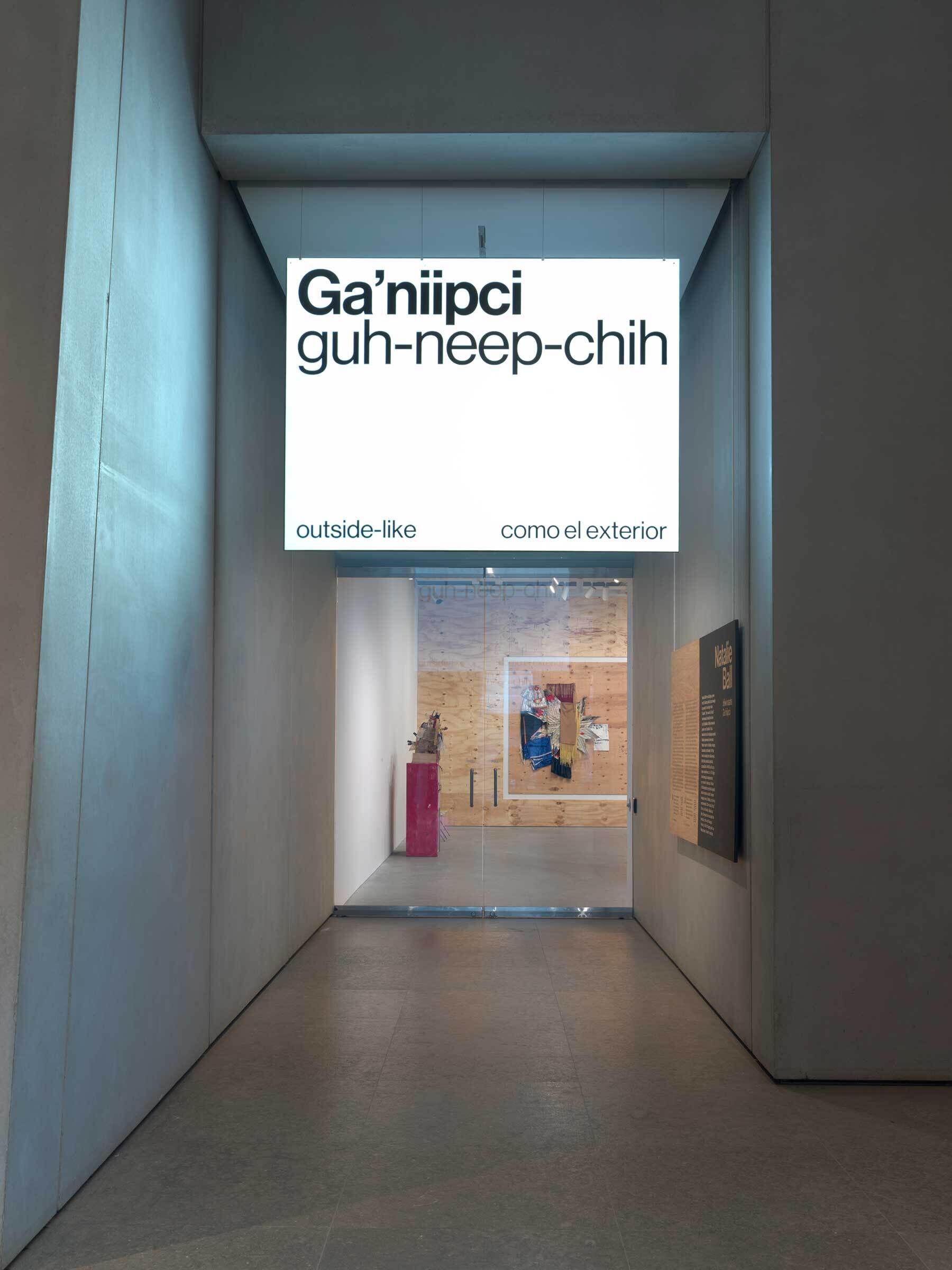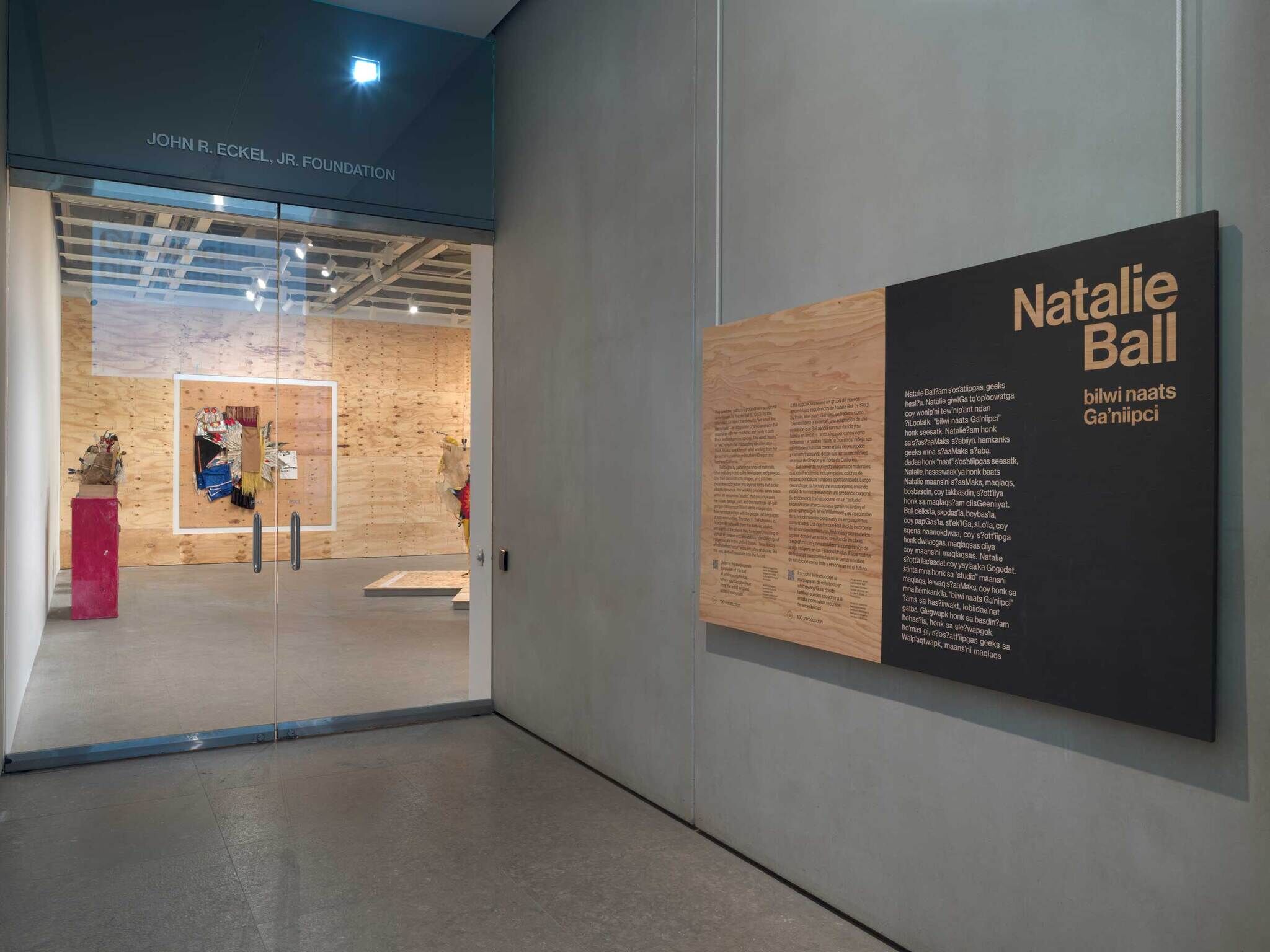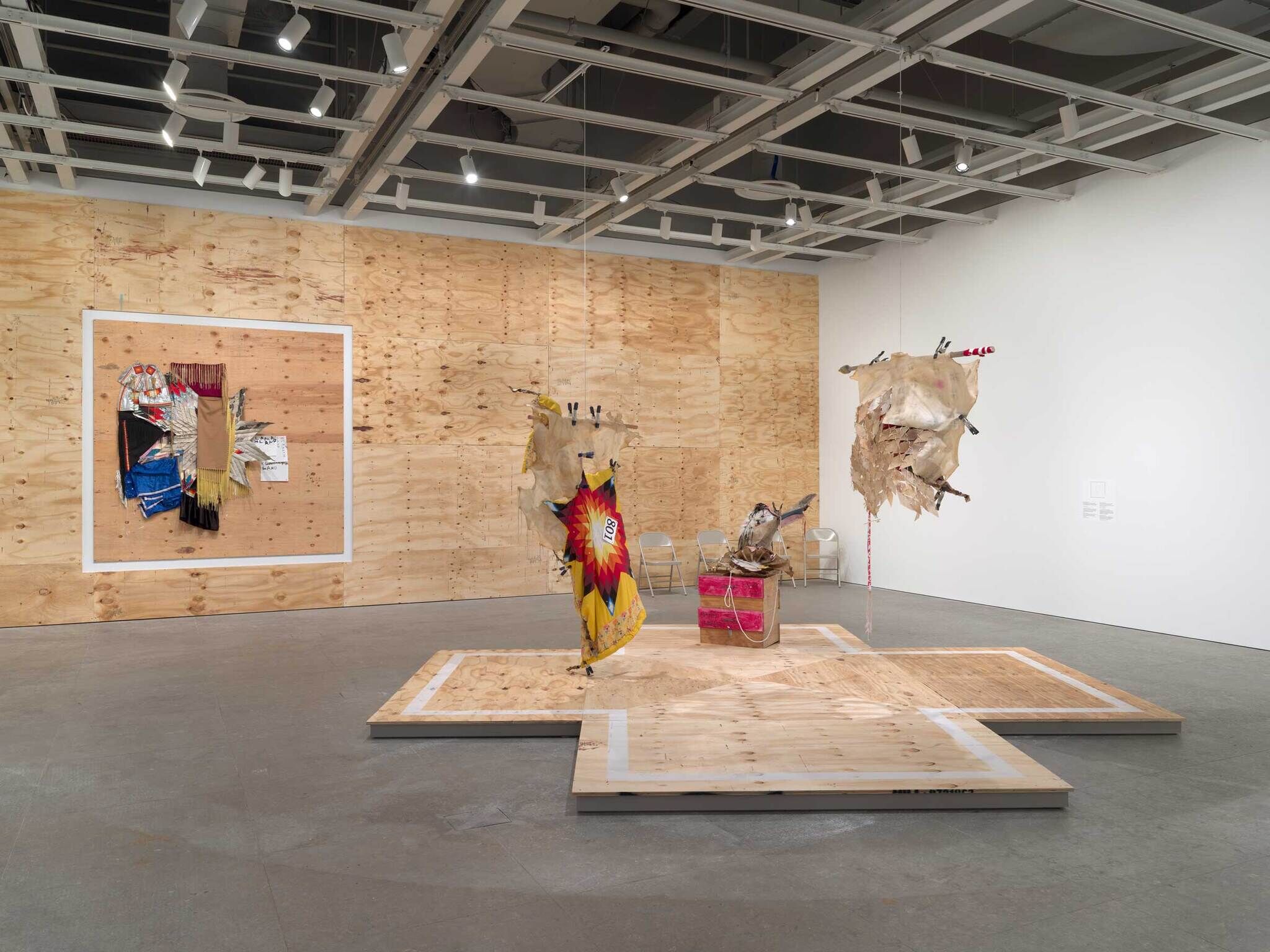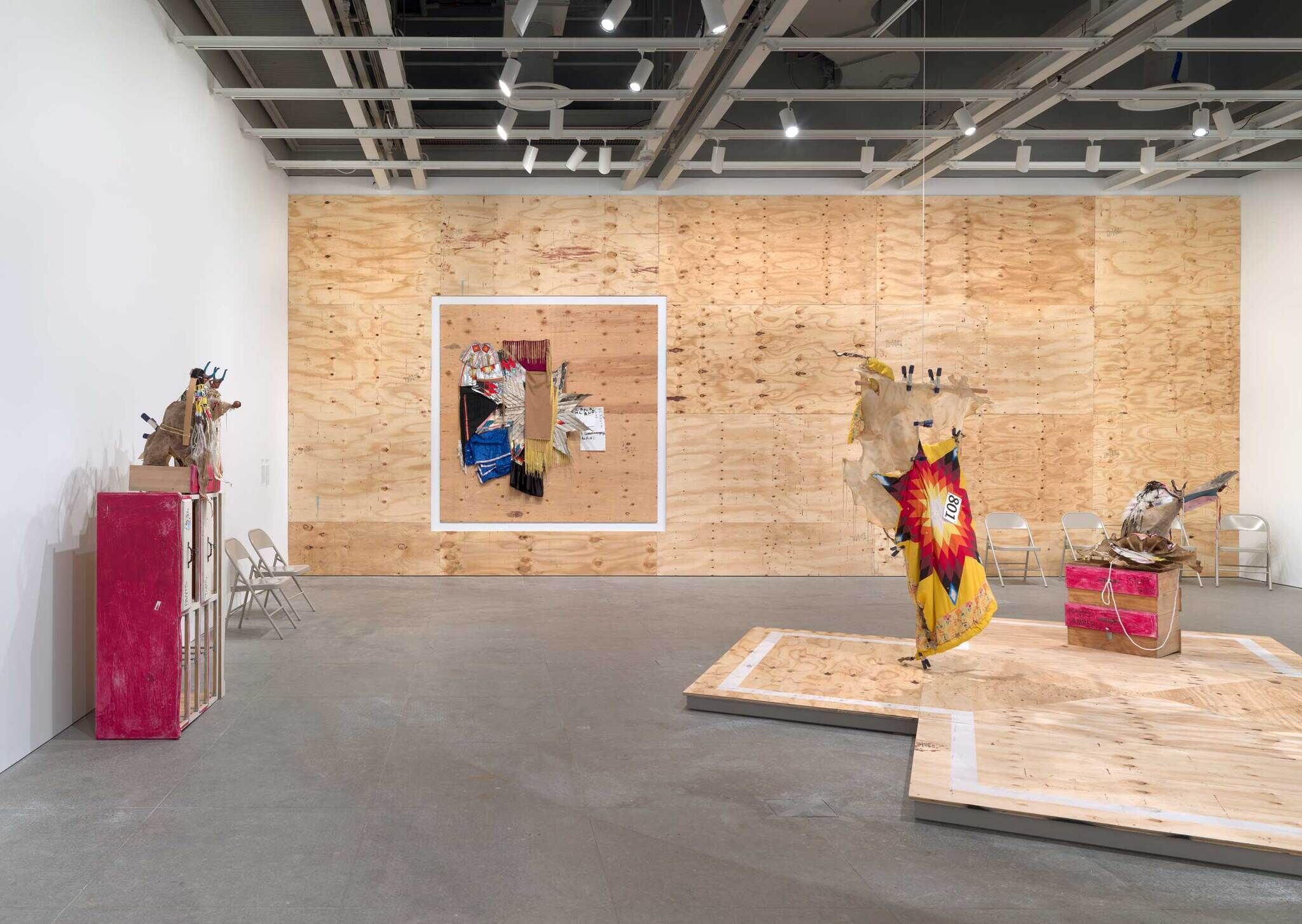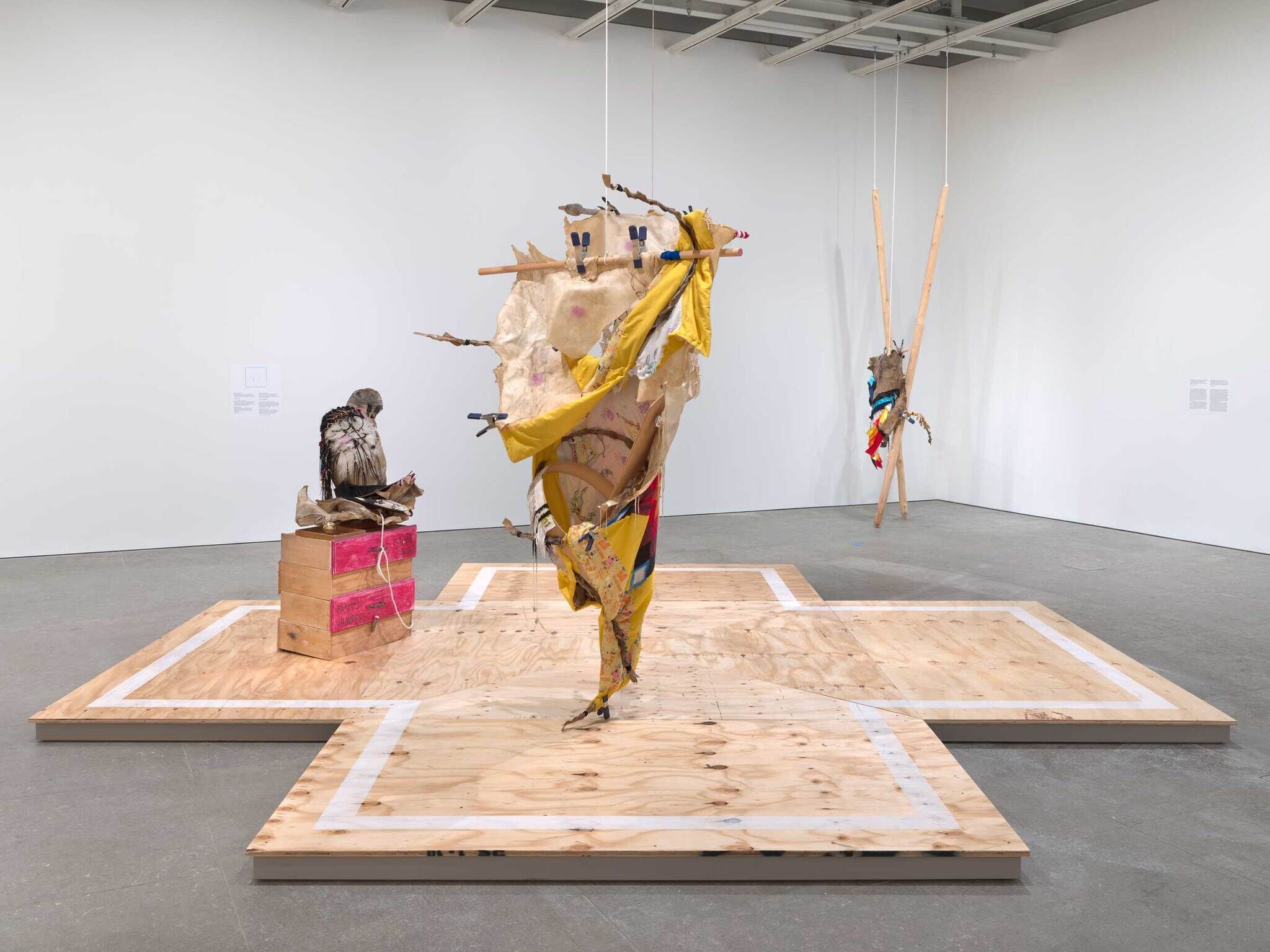Natalie Ball: bilwi naats Ga’niipci
Nov 17, 2023–Feb 19, 2024
Natalie Ball: bilwi naats Ga’niipci
This exhibition gathers a group of new sculptural assemblages by Natalie Ball (b. 1980). Its title, bilwi naats Ga’niipci, translates to “we smell like the outside”—an adaptation of an expression Ball associates with her childhood and family in both Black and Indigenous spaces. The word “naats,” or “we,” reflects her intersecting identities as a Black, Modoc, and Klamath artist working from her ancestral homelands in Southern Oregon and Northern California.
Ball begins by gathering a range of materials, often including hides, quilts, newspaper, and plywood. She then deconstructs, shapes, and stitches these objects together into layered forms that evoke a bodily presence. Her working process takes place within an expansive “studio” that encompasses her house, garage, yard, and the nearby ya-ah-gah goo’geh (Williamson River) and is inseparable from her relationships with the people and languages of her communities. The objects Ball chooses to incorporate carry with them the textures, stories, and scents of the places they have been, resulting in works that deepen and destabilize understandings of Indigenous life in the United States. These traces of transformed history echo into sites of display, like this one, and will resonate into the future.
This exhibition will be on view in the Museum’s Lobby gallery, which is accessible to the public free of charge, as part of the Whitney Museum’s enduring commitment to support and showcase the most recent work of emerging artists.
This exhibition is organized by Jennie Goldstein, Jennifer Rubio Associate Curator of the Collection, with Rose Pallone, Curatorial Assistant.
Generous support for Natalie Ball: bilwi naats Ga’niipci is provided by the John R. Eckel, Jr. Foundation.
Additional support is provided by Becky Gochman and Bernard I. Lumpkin and Carmine D. Boccuzzi.

